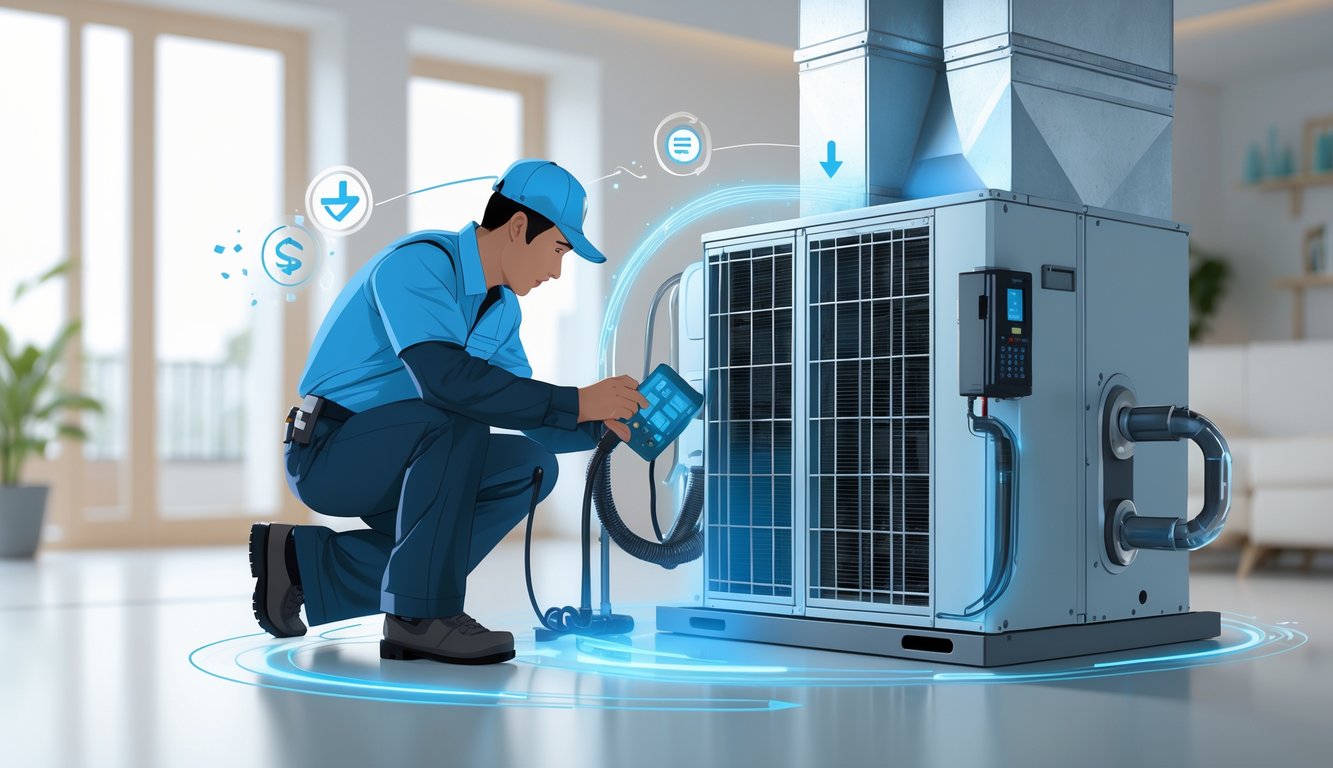
Look, I didn’t think I’d ever be the person who cared about HVAC inspections. That always sounded like something only dads and landlords obsessed over, right? But here’s the thing—skip even one seasonal inspection and, bam, your utility bill can jump 20% (or more, which is just rude) because of something as dumb as a clogged filter or gross coils. And those coils? Stupid expensive to replace. I used to think my AC was just “old” too, so if you’ve ever stared at a bill and muttered, “No way,” same. Turns out, heating and cooling guzzle almost half your home’s energy—especially if you treat maintenance like a suggestion and not a rule. I’m just as guilty. Dust bunnies: undefeated champions.
So yeah, remembering to call for an inspection the second it gets hot outside is not glamorous. My neighbor swears her bill dropped $40 a month after she finally did it (she’ll show you the receipts, seriously, just ask). It’s not just about avoiding breakdowns—these checkups keep the whole system from working overtime just to make your living room bearable. Airflow, efficiency, whatever. It’s not rocket science, just regular maintenance. Boring, but it saves money. HVAC efficiency and energy costs are tangled up way more than anyone admits, and I’m tired of pretending otherwise.
If your system sounds like it’s haunted at 2 a.m., it’s probably burning through cash while it whines. Mechanical issues that never get checked? That’s your bill, climbing. Meanwhile, my dog’s discovered the vent is his personal spa, which is probably not helping, but hey, maybe the savings from a real inspection will buy him a lifetime of treats.
Understanding HVAC Inspections
Nobody warns you about the weirdness you’ll see during an HVAC inspection. I’m talking about a tech pulling out a filter so caked with dust it could star in a crime show. Suddenly, your system works better, your wallet doesn’t cry, and sometimes even those weird air smells disappear. I still can’t decide what’s scarier—finding crumpled receipts in the vents or that time I saw a mouse nest. Pros catch stuff those YouTube DIYers never mention.
What Is an HVAC Inspection?
There’s slapping on duct tape, and then there’s actual maintenance. HVAC inspections? They matter. Techs poke around, check refrigerant lines, look for fried wires, and open up control boards with that smug “gotcha” face. Even just swapping a filter—always feels optional until you get a $300 utility bill—is actually a big deal for both your wallet and your system’s life span.
People say spring and fall are the best times for these checkups. Makes sense, I guess, since that’s when your system gets whiplash from weather swings. Dust, leaks, sketchy gaskets, thermostats that lie—techs put all this in a report I barely skim, then regret ignoring when it’s 95 degrees again. Fun fact: inspection bookings always spike after local news runs a story about high power bills. Coincidence? I doubt it.
How a Professional HVAC Inspection Works
Picture this: the tech shows up, my dog loses his mind, and I realize I have no idea what’s on that 28-point checklist. Inspect East says pros start with the basics but end up making your system look less like a horror movie prop. Or, you know, they finally find that rattle I’ve ignored for months.
They don’t just look—they use diagnostic software, airflow meters, and sometimes those thermal cameras that make your house look haunted. Newer systems tattle on themselves with color-coded reports I never understand. Real talk: these inspections catch blockages, bad calibrations, and settings you’d swear don’t matter, until you see your “fine” system is eating electricity like popcorn.
That long report? I shove it in a drawer, but it’s the only reason I ever know what’s about to break. It’s what lets you fix stuff before it explodes, instead of calling for help at 1 a.m. during a heat wave. Wish I’d known this before my compressor died last summer. Still salty.
Link Between HVAC Inspections and Utility Costs
Furnace filters packed with dust, vents blocked by couches—people might as well Venmo the utility company directly. Regular inspections can stop some of this nonsense. It’s not about fancy tech; it’s about money you don’t have to waste and not getting blindsided by a $400 bill.
How Inspections Directly Impact Energy Consumption
Cranking the thermostat but still freezing? Yeah, probably not the weather. It’s usually a clogged coil or a leaky duct stealing your heat (and your cash). Heat pumps and ACs run longer when stuff’s dirty or broken, quietly racking up your bill. Almost half your home’s energy disappears into HVAC, and when things go out of whack, those numbers get ugly.
Industry stats—like in this guide—say neglected systems use way more electricity. I’ve seen the dumbest things (like a couch over a vent) force a system to run twice as long. Inspectors catch this stuff. That’s honestly the only reason I recommend it: lazy filter changes cost real money.
Reducing Your Utility Bills Over Time
Here’s the thing—even if you get one inspection and feel smug, skip the next few years and it’s all for nothing. I’ve watched people brag about their “efficient” heat pump, then lose it when their winter bill doubles because no one checked for a duct leak. Small fixes pile up into legit savings if someone’s actually paying attention.
People love to talk about “ROI.” Makes me laugh. You don’t need a spreadsheet—just get a home energy assessment and you’ll find a few easy wins: programmable thermostat, better weather-sealing, duct tape (the real kind, not the dollar store stuff). Not magic. Just fewer energy leaks. Any tech will tell you: skip maintenance, and not only do you pay more for power, you’ll pay more for repairs. Maintenance roulette is a terrible game.